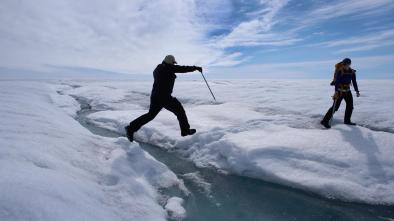2015 Set Frenzy of Climate Records

The warming of the world’s climate has reached a fever pitch in recent years, causing records to fall like dominoes. In 2015, the planet saw a number of such records set, from the hottest global temperature measured to the largest annual increase in carbon dioxide.
Those records — along with numerous other indicators of the considerable change wrought on land, in the oceans and air, and to ecosystems — are detailed in the annual State of the Climate Report released Tuesday by the U.S. National Oceanic and Atmospheric Administration.
While a strong El Niño provided a boost to global temperatures last year, the main driver of the planet’s temperature surge, as well as other climate trends, is the warming caused by the buildup of greenhouse gases in the atmosphere.
And just as many of the records of 2015 broke those set only one year earlier, 2016 has broken or is poised to break several of 2015’s records:
- The average temperature for the world in 2015 was record warm in all four major datasets, which are run independently by different U.S. and international agencies. The year beat out 2014 by 0.2°F (0.1°C) — the highest margin for such a record since 1998.
- The annual average of carbon dioxide levels at the Mauna Loa Observatory in Hawaii, which keeps the longest-running record of atmospheric CO2, was 400.8 parts per million. That was the first time the measurement was over 400 ppm for the year. While that benchmark is somewhat symbolic, it shows how far those levels have risen since preindustrial times, when CO2 measured about 280 ppm.
The year also saw the biggest year-over-year increase on record at Mauna Loa, 3.1 ppm. While 2016 is only halfway over, it is slightly ahead of 2015 by this measure.
One of the key drivers of 2015’s record heat was the global oceans, which take up 90 percent of the excess heat trapped by the atmosphere. Sea surface temperatures and the heat contained in the upper portion of the oceans both set global records, surpassing those set in 2014.
[S]ea surface heights were record high, measuring about 2.75 inches higher than at the beginning of the satellite altimeter record in 1993.
Arctic sea ice reaches its peak at the end of the winter; last year that winter peak set a record low. That record has already been beaten [in 2016].
Related Content





